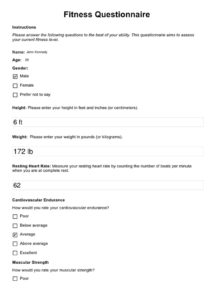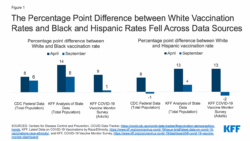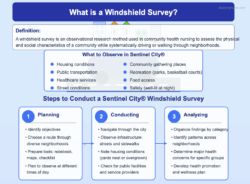Understanding the complexities surrounding obesity isn’t just about statistics; it’s deeply rooted in individual perceptions, behaviors, and attitudes. This is where a Likert scale survey template for obesity becomes an incredibly powerful tool. It allows researchers, healthcare providers, and community organizations to move beyond simple yes/no answers and delve into the nuances of how people feel, what they believe, and how consistently they engage in certain lifestyle habits related to weight management. Imagine gathering insights on body image, dietary choices, physical activity levels, or even the perceived barriers to healthier living in a way that truly reflects the spectrum of human experience.
By providing a range of response options, from "Strongly Disagree" to "Strongly Agree," a Likert scale helps capture the intensity of feelings or opinions. This method offers a more comprehensive picture than binary questions, which can often oversimplify intricate issues. When addressing a sensitive and multifaceted topic like obesity, this depth is invaluable. It helps us identify underlying psychological factors, social influences, and practical challenges that might otherwise go unnoticed, paving the way for more targeted and empathetic interventions.
Crafting Meaningful Questions for an Obesity Survey
Designing an effective Likert scale survey for obesity requires careful thought and a deep understanding of the subject matter. The questions need to be clear, unbiased, and cover the various dimensions that contribute to or are affected by obesity. It’s not just about what someone eats, but also why they eat it, how they feel about their body, what motivates them, and what obstacles they face in adopting healthier habits. Think about the many layers involved and try to capture them without making assumptions. Each question should aim to elicit an honest response without leading the participant towards a particular answer.
When we consider the scope of an obesity survey, we’re looking at a broad spectrum of human experience. This includes psychological well-being, social stigma, access to resources, personal habits, and even genetic predispositions. A well-constructed Likert scale can help disentangle these factors, offering insights into their relative impact. For instance, questions about self-efficacy might reveal a person’s belief in their ability to make changes, while questions about perceived social support could highlight the role of community in health outcomes. The precision of a Likert scale allows for a nuanced understanding of these often-interconnected elements.
Key Dimensions to Cover
To ensure your Likert scale survey template for obesity captures a holistic view, consider including questions across several vital categories. These areas often influence or are influenced by an individual’s journey with weight management and overall health.
- Attitudes Towards Food and Eating: How people feel about healthy eating, emotional eating triggers, and portion control.
- Physical Activity Habits: Frequency and intensity of exercise, enjoyment of physical activity, and perceived barriers to being active.
- Body Image and Self-Perception: Feelings about one’s own body, impact of societal beauty standards, and confidence levels.
- Knowledge and Beliefs About Health: Understanding of nutritional guidelines, chronic disease risks, and the benefits of a balanced lifestyle.
- Barriers and Facilitators: Perceived obstacles to healthy living (e.g., cost, time, lack of support) and factors that make it easier.
- Social and Environmental Influences: Impact of family, friends, work environment, and community resources on health choices.
By touching on these diverse areas, your survey will yield rich, actionable data. Remember, the goal is to understand the "why" behind the "what," allowing for more empathetic and effective interventions. A comprehensive approach ensures that the insights gained are not superficial but delve into the heart of the challenges and opportunities.
Analyzing and Utilizing Your Survey Insights
Once you’ve administered your Likert scale survey, the real work begins: interpreting the wealth of data you’ve collected. This isn’t just about counting responses; it’s about identifying patterns, understanding prevailing sentiments, and pinpointing areas where intervention is most needed. For each statement, you can assign numerical values to the Likert scale responses (e.g., Strongly Disagree = 1, Strongly Agree = 5) to calculate averages, medians, and modes. This quantitative analysis allows you to see common trends, such as widespread agreement on the difficulty of maintaining physical activity or a strong disagreement with negative body stereotypes.
Beyond simple averages, you can group responses by demographics to uncover specific needs within different populations. For example, comparing the responses of younger adults to older adults might reveal different barriers to healthy eating, or comparing responses based on socioeconomic status could highlight disparities in access to resources. This granular level of analysis is crucial for developing targeted programs that genuinely resonate with specific groups. It moves you past general assumptions and into evidence-based strategies tailored to real-world conditions.
The insights gleaned from your Likert scale survey can inform a wide range of initiatives. Perhaps the data indicates a pervasive lack of knowledge about healthy food preparation, suggesting a need for cooking classes and nutritional education. Or maybe it highlights significant emotional eating patterns, pointing towards the benefit of mental health support or stress management workshops. The power of this data lies in its ability to guide resource allocation and program development, ensuring that efforts are directed where they can have the greatest impact and truly address the identified needs of the community or target group.
Ultimately, the goal is to translate these findings into tangible actions that improve health outcomes. Whether you’re developing public health campaigns, designing patient education materials, or advocating for policy changes, the detailed feedback from a well-structured Likert scale survey provides a solid foundation. It empowers you to create interventions that are not only evidence-based but also deeply responsive to the lived experiences and unique challenges faced by individuals navigating their journey with obesity.



